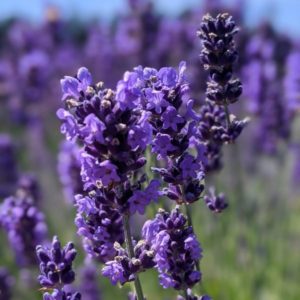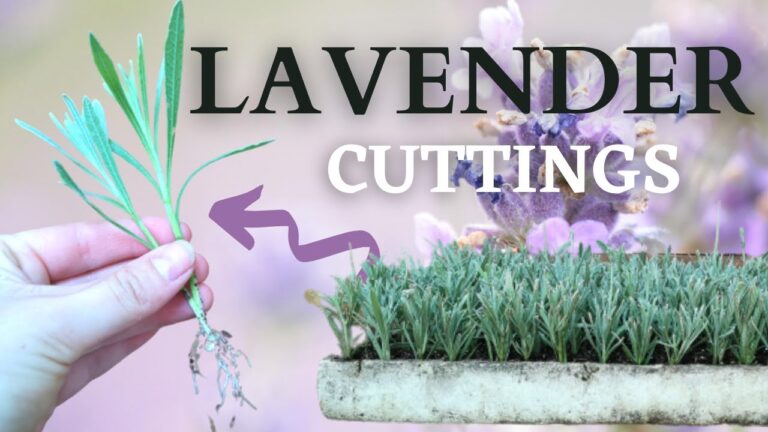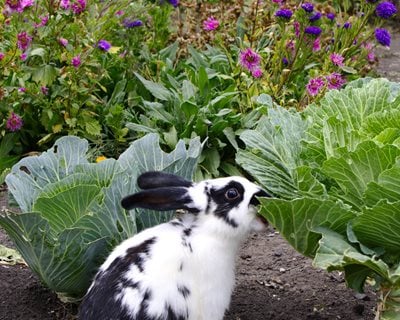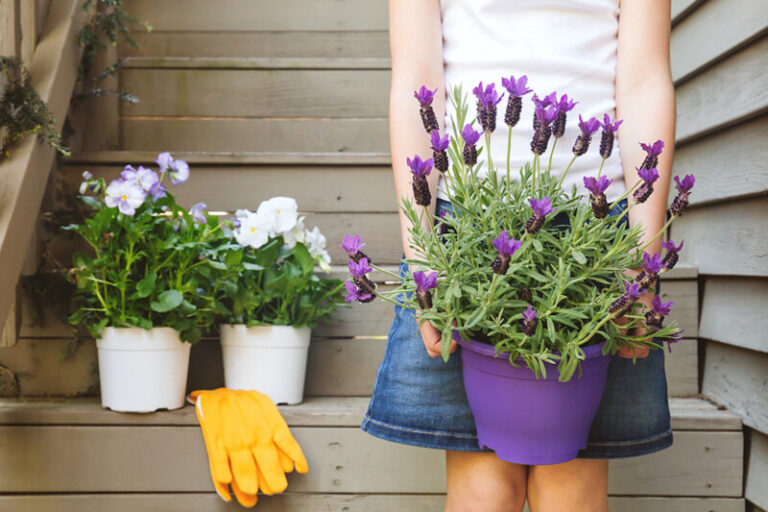Exploring Lavender Plants
Lavender is a superstar plant, loved for its soothing aroma and charming looks. It’s not just about smelling nice—lavender’s got a job in the kitchen and even in the health scene. Let’s check out what makes lavender tick and why it’s appreciated around the globe.
Lavender Plant Overview
Think of lavender as a well-traveled little shrub. Originally from the Mediterranean’s mountainous zones, it has since made itself at home in sunny spots across southern Europe, Australia, and the United States. This hardy plant grows to about two feet tall and is pretty adaptable, thriving in bright gardens everywhere.
| Attribute | Description |
|---|---|
| Native Region | Mediterranean mountains |
| Height | Up to 60 cm (24 inches) |
| Growing Conditions | Sunlit areas |
| Distribution | Europe, Australia, United States |
The flowers? Pure magic. With their relaxing scent and vibrant purple shade, they steal the show. They’re also big in aromatherapy for peace-inducing vibes and add a special touch to all kinds of dishes. Curious about cooking with lavender? Check out our tricks in the culinary uses of lavender section.
Cultural Significance
Lavender’s fame isn’t just modern. Way back, Egyptians swore by lavender oil during their intricate mummification rituals. In foodie Greece and Rome, it was a favorite for baths, meals, and medicine too.
Fast forward to Germany, where lavender cuddles people to sleep with tea that soothes insomnia and frazzled nerves. Its knack for calming and healing keeps it relevant, offering relief from insomnia to easing cranky moods.
| Usage | Description |
|---|---|
| Ancient Egypt | Mummification process |
| Greece & Rome | Bathing, cooking, medicinal uses |
| Germany | Tea for insomnia, restlessness |
Today, lavender pops up everywhere—from weddings to living rooms—proving it’s got that ageless appeal. Ready to become a lavender guru or just want to see them blossom in your backyard? Peek at our guide on types of lavender plants.
Lavender’s still kicking it, with a history as rich as its aroma. Whether it’s reigning in a garden or soothing with its scent, this plant keeps winning hearts worldwide. Want more on its calming powers? Unravel it all in our aromatherapy guide.
Health Benefits of Lavender
Lavender isn’t just that lovely flower with a pleasant smell; it packs multiple perks that go beyond fragrance. Let’s dig into the good stuff lavender has to offer, particularly its healing powers and soothing scents.
Medicinal Uses
Lavender has a long track record of helping folks stay healthy. This purple plant isn’t just for making your home smell nice; the essential oil derived from its blooms is a game-changer (Mount Sinai).
| Problem | What Lavender Can Do For You |
|---|---|
| Jitters and Anxiety | Pop a lavender oil capsule (usually around 160 mg) to ease those nerves. Some say it’s as effective as taking a chill pill like lorazepam (Healthline). |
| Can’t Sleep? | Sniff some lavender oil, and you might find your way to dreamland faster, with less tossing and turning (Mount Sinai). |
| Ouch! Post-Surgery Pain | Rubbing lavender oil on the area can ease the hurt after an operation. |
| Hair Falling Out? | Lavender oil might just be what your scalp ordered to combat those thinning patches. |
Aromatherapy Benefits
Using lavender in aromatherapy is like having a secret weapon for enhancing your emotional well-being. Its comforting fragrance is not only enjoyable; it’s scientifically backed to help with rest, mood-lifting, and making you feel zen.
Lavender’s Top Aromatherapy Perks:
- Better Sleep Vibes: Folks who surrounded themselves with lavender while they snooze report feeling more awake and energized the next day.
- Happy Feelings: Lavender helps cheer you up and keeps those stress levels in check.
- Chill-out Factor: It’s not unusual to find lavender used to set a relaxing atmosphere.
With its many uses, lavender’s like the MVP of the plant world. To explore how you can add lavender to your meals, head over to our section on lavender plant uses.
Curious about growing your own lavender or caring for the plants you already have? We’ve got all you need in our piece on lavender plant care.
Culinary Uses of Lavender
Lavender rocks its fabulous floral scent and eye-catching color, and it sure knows how to steal the spotlight in your kitchen! Let’s see how lavender can shake up your recipes for that ‘wow’ factor.
Cooking with Lavender
So you’re thinking about tossing lavender into your cooking mix? First things first—use the flower buds, folks! That’s where the magic happens with those sweet floral notes that make dishes sing. Don’t even think about the stems and leaves unless you enjoy a hit of bitter soapiness.
Popular Lavender Dishes
You can whip up some incredible stuff with lavender:
- Sweet Treats: Mix it into your cakes, cookies, or ice creams for a flavor surprise.
- Savory Bites: Jazz up your meats, hearty stews, and sauces.
- Refreshing Swigs: Craft a new experience in teas, lemonades, and cocktails with its aromatic pizzazz.
Choosing the Right Variety
Your taste buds deserve only the best. Go for English lavenders, especially the Lavandula Angustifolia. Seriously, ‘Munstead’ and ‘Hidcote’—these are flavor powerhouses!
| Culinary Lavender Varieties | Characteristics |
|---|---|
| ‘Munstead’ | Sweet and mellow |
| ‘Hidcote’ | Packs a rich, slight zing |
Best Practices in Culinary Lavender Use
Moderation is Key
Lavender’s got a punch; use it wisely, or you’ll end up in soap territory. A touch is enough to bring other flavors to life without going overboard.
Processing for Culinary Use
It’s all about quality, baby! The lavender buds are dried, cleaned up to perfection, and should be gleaming blue-purple. You want that spicy zing, not the kind that smells like granny’s perfume counter.
Storage of Culinary Lavender
Keep your lavender buds out of the light and away from moisture. Airtight is right! This way, they’ll be ready to amp up your culinary adventures whenever you need them.
By showing lavender some love in your cooking, you’re not just throwing in an ingredient—you’re adding an extra dimension to your dishes. Create something extraordinary, whether you’re sprinkling it on desserts or spicing up a meal. Lavender’s your new kitchen sidekick! Curious about more lavender magic? Check out our lavender plant uses for a deeper dive.
Consuming Lavender
Trying out lavender in your cooking adventure? It’s a whole new tasty playground with this aromatic herb. Get cozy with which parts are yummy and the best ways to toss them into your meals without overdoing it.
Edible Parts of Lavender
Bottom line: Not all lavender bits belong in your soup. Flowers take the crown for their gentle floral kick. Leaves get a mention but approach with caution; they pack a punch flavor-wise.
- Flowers: These are your go-to for a sprinkle of lavender love in teas, cakes, and sweet delights. Lavender blossoms are as good as gold in the kitchen.
- Leaves: Use these like you would a strong-willed rosemary. But watch out – they’re intense, so a teeny bit goes a long way.
Cooking with Lavender Tips
To cozy up lavender in your kitchen, ease into it. Too much and you’ll feel like you’ve taken a bite out of a bar of soap. Here’s the lowdown:
- Go Easy: Lavender can be assertive. Start small, taste, then maybe add a hint more.
- Match it Up: Cozy it up with rosemary, thyme, or sweet things like sugar. Lavender is your dessert’s new best friend.
- Fresh vs. Dry: Fresh lavender whispers; dried lavender screams. Use less dried than you would fresh.
- Infuse the Magic: Soak it in cream or syrup for the flavor without chomping on the flowers.
Best Practices for Culinary Lavender Use
To make lavender your new kitchen buddy, remember these tricks for a tasty, safe meal:
| Tip | Description |
|---|---|
| Right Lavender | Stick with culinary types like Lavandula angustifolia. It’s mellow and sweet. |
| Pesticide-Free | Double-check your lavender is edible and lacks nasty chemicals. |
| Flavor Dance | Mix lavender with flavors that vibe well together. |
| Proper Stash | Keep dried lavender snug in a jar, safe from light and heat, to keep its taste intact. |
Curious to grow lavender on your own balcony? Hop over to our guide on lavender plant care. Want a rundown on different lavender types and what they offer? Peek at our types of lavender plants.
Getting comfy with which parts to eat and how to use lavender lets you get creative without the panic. Brew it in tea or pop it in a dessert for that extra zing – lavender’s your ticket to making dishes stand out.
Growing and Harvesting Lavender
Got a sweet spot for lavender? This delightful plant not only beautifies your garden but sneaks its way into your kitchen too. With a bit of tender loving care, you can make your lavender thrive and shine in your dishes! Here’s how to pamper and harvest lavender like a pro.
Lavender Plant Care
Lavender’s the grandma of the garden world — give it some love, and it’ll hang around for years, up to about a decade if you’re lucky! The trick? Nail the basics, like sunbathing, drainage, and a bit of snip-snip action. Here’s your cheat sheet:
-
Sunlight: Full sun, please! We’re talking 6-8 hours of golden rays. Because nobody likes a pasty lavender. More on that here.
-
Soil: Ain’t nobody got time for soggy roots. Make sure your soil lets water through easily.
-
Watering: Give the young ones plenty of drinks until they can fend for themselves. The grown-ups? They’re low-maintenance, so keep it minimal.
-
Pruning: Keep those snips handy! This keeps your lavender sprouting happily instead of turning into Woody McWooderson. Snip those English lavender plants yearly, especially in fall after their last floral hurrah (Freckled Californian). Shape your greenery into a cute mound, keeping a couple of inches of green on top.
| Care Aspect | Best Practices |
|---|---|
| Sunlight | Full sun (6-8 hours) |
| Soil | Well-draining |
| Watering | Regular until established; minimal later |
| Pruning | Annual, in fall for English lavender |
For more nuggets of wisdom, swing by our lavender plant care corner.
Harvesting Lavender Buds
Ready to give your lavender the culinary spotlight? Timing means everything here. Go for the buds, not the full bloomers.
-
Timing: Keep an eye out for those color-popping buds, ideally right before they go full flower power.
-
Method: Arm yourself with sharp scissors or shears for pristine cuts. Mornings are your best bet, catching them after the dew vanishes and before the day heats up.
-
Drying: For luxurious lavender long after it’s picked, hang the bunches upside down or lay them out on a drying rack in a dark, airy nook.
Find all the gory details on how to prune lavender plants.
Harvesting Tips:
- Aim for morning harvest
- Use sharp blades for tidy cuts
- Opt for dark, breezy drying spots
Stay on track with these pointers to savor lavender’s culinary perks. Hungry for more? Check out our tips on lavender plant uses and how it jazzes up your garden here.
Risks and Considerations
When you’re thinking about adding a dash of lavender to your cookie recipe or brewing a calming cup of lavender tea, remember: a little info goes a long way in keeping things safe! Let’s take a look at what you need to know before diving into the fragrant world of lavender.
Allergic Reactions
Sure, lavender smells like a walk through a dreamy meadow, but, just like some folks can’t handle peanuts or shellfish, a few unlucky people might find themselves sneezing or itching after a close encounter with the purple herb. Those with sensitivities to other flowery friends should keep an eye out for any funky symptoms like skin rashes or that pesky tickle in the throat.
Thinking you might be on the scented-flower blacklist? Best to chat with your doc before dunking lavender in your tea or slathering it on your skin. And if you’re playing with lavender essential oils, remember they’re like lavender on steroids—so be careful.
Toxicity Concerns
Lavender might be the go-to herb for spicing up a salad, but it’s a different story for our animal pals. Introduce too much lavender into Fido’s bowl, and that lovely bloom could become a tummyache culprit.
Toxicity in Pets
- Dogs: Eat too much lavender, and your pup might end up with a round belly, loss of appetite, or an urgent need to “speak to the manager” (yes, vomiting) (Plant Addicts).
- Cats: Kitties might start hacking or having trouble breathing because their sniffers are just too sensitive for this aromatic stuff.
- Birds, reptiles, and small mammals: These little guys have such delicate respiratory systems that even a whiff of lavender oil in the air can be a bit too much for comfort.
Other Considerations
- Horses: It might sound strange, but even mighty horses are no match for too much lavender. Though, in the garden, deer and rabbits tend to snub it like it’s yesterday’s fashion (Plant Addicts).
Curious about how specific animals react to lavender? Check out our intel on lavender plants and cats and are lavender plants toxic to dogs.
| Animal | Symptoms of Toxicity |
|---|---|
| Dogs | Swollen belly, no appetite, fever, barfing |
| Cats | Irritated lungs, breathing issues, hacking cough |
| Birds, Reptiles, Small Mammals | Sensitive sniffers not happy with strong smells |
| Horses | Not good in large bites |
Knowing the scoop on these lavender do’s and don’ts helps you enjoy the perks without any hiccups. Need some tips on giving your lavender plant some TLC? Swing by our pages on lavender plant care and how to prune lavender plants.




